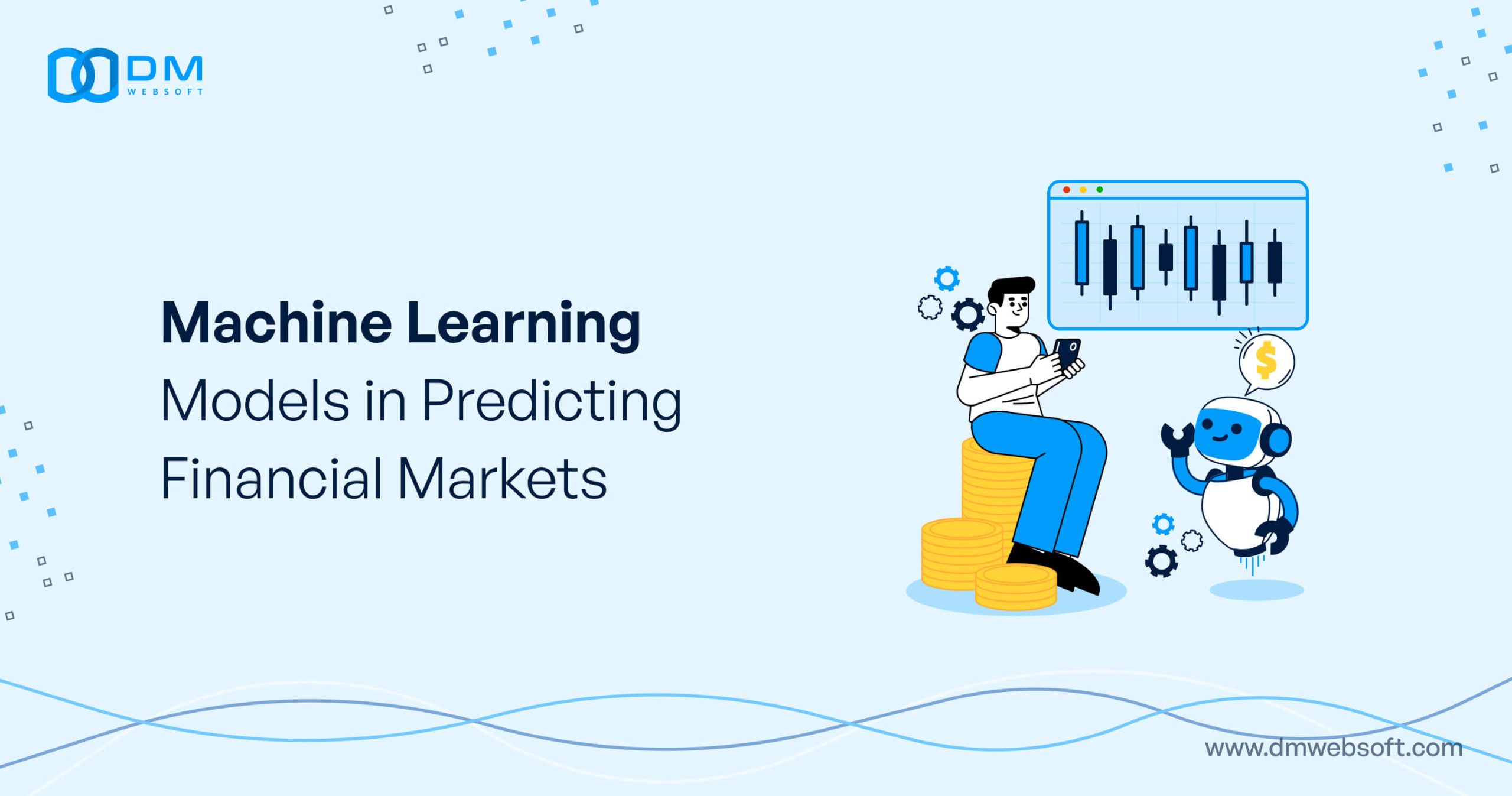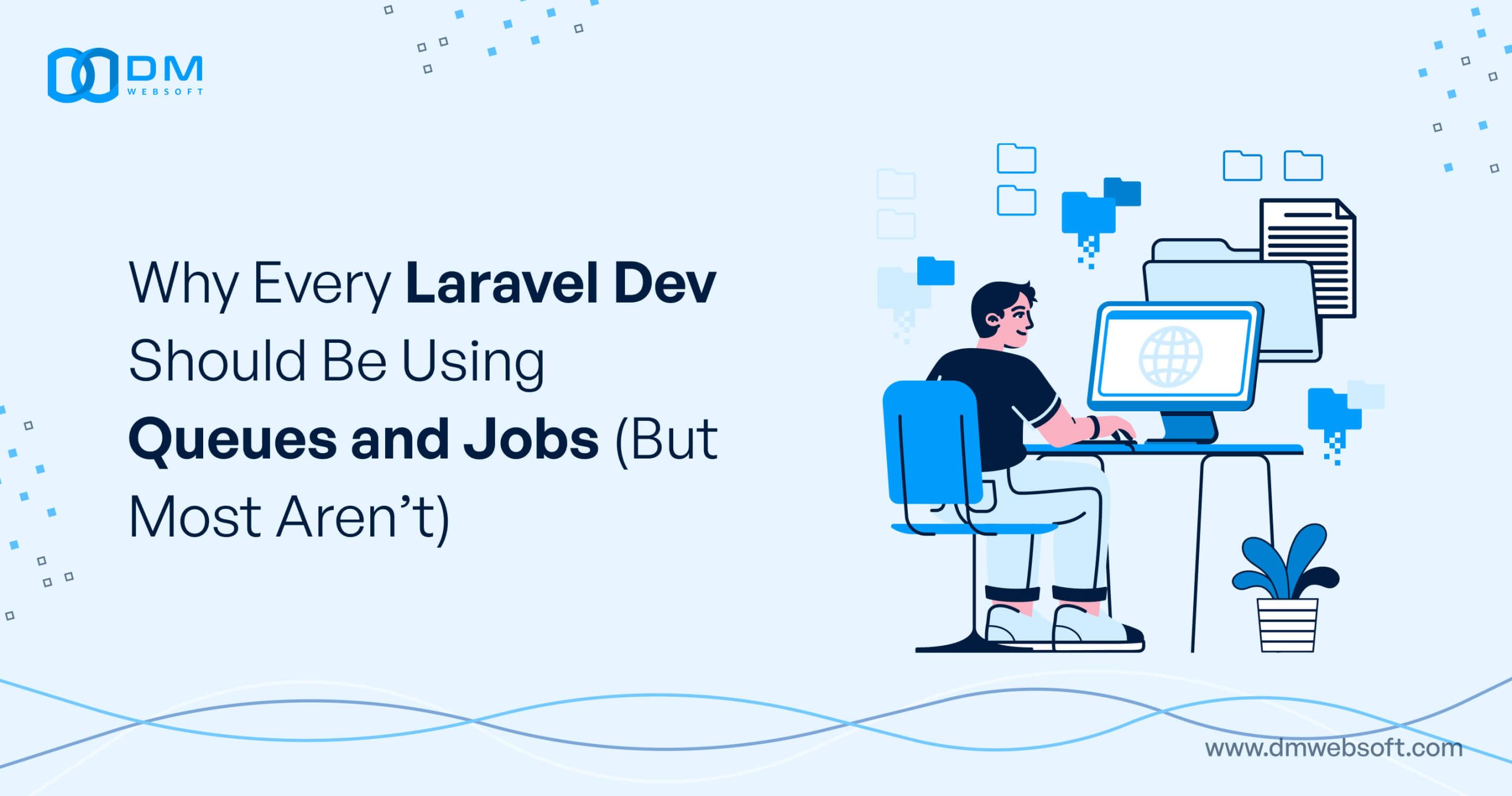DM WebSoft LLP exceeded our expectations! Their seasoned team of experts delivered a website that perfectly captures our brand essence. Their 15+ years of experience truly shine through in their exceptional web development skills.

Introduction

The world of finance is such; it can be said to be dynamic, where the sole truth lies in uncertainty. Machine learning (ML) and Artificial Intelligence (AI) have been recently introduced into the world of predictive analytics to refashion the concept of how predictions are made in the market. The complex algorithms and computational powers of ML have sure become game changers, rendering hitherto unprecedented exposure into market trends, risk assessments, and investment opportunities.
Inherent in this revolution is the characteristic ML models have: to be able to classify and analyze troves of data at speeds and accuracies humanity had never seen before. These models are not only tools, but reshape the financial landscape in the way that they manage to find subtle patterns and correlations that escape human analysis, and therefore allow for an investment better informed, and often more timely.
DM WebSoft LLP rides this technology wave and harnesses the power of ML to bring innovative financial solutions that make business and investing even more empowering. This is enshrined in our commitment to leading technology, enabling our clients with the most advanced analytical tools that the market has to offer to usher new standards of predictive accuracy and financial strategy.
Going further down into the depths of the role of ML in predicting financial markets, one can see not so much a trend but a paradigm shift in progress. Fintech is not just merging finances and technologies; it is an improvement and modification of the existing ones. It definitely redefines the very nature of market analysis and decision-making.
This blog will cover the specific benefits that ML models provide to finance; the technological advancements in financial decision-making that allowed for these leaps; real-world successes, challenges to be navigated, and how DM WebSoft LLP is at the leading edge of ML in transforming financial forecasting. Join us on this journey as we uncover the intricacies and potential of ML in shaping the future of finance.
The Unique Suitability of ML for Financial Markets

In this labyrinth of the financial markets, variables akin to the winds of change, adoption of machine learning (ML) shines in innovation, tailor-made for the complexity and data-intensive needs in finance. Not coincident: its unique suitability in this domain is a product of its inherent capabilities that align perfectly with the requirements of forecasting finances.
Unveiling Patterns within Complexity
At its core, ML thrives on complexity. All this, furrowed further by complex interrelationships and influence, makes the financial markets a playground perfect for ML algorithms. Where traditional analytical methods might fail in the presence of big data and non-linear relationships, ML models seem more capable of bringing to the surface the patterns hiddenly inherent within and finding the correlationality of the same. This ability to decipher the subtle language of financial data makes ML an invaluable tool for market prediction.
Adaptive Learning for Dynamic Markets
Financial markets are dynamic in nature and are always in a phase of influence; from economic indicators to geopolitical events, among others. Conversely, the ability of ML models in adaptive learning changes with time and may update with improved accuracy, keeping the predictions alive, something that is required for relevance in a world where yesterday’s trends may be considered irrelevant.
Risk Management and Anomaly Detection
Risk management is part of the most important financial activity. ML models bring an ability to highlight anomalies and outliers within huge datasets in this area. If historical behaviors of the market can be used to flag up likely risks and suspicious trends so institutions can take action beforehand, it will save the assets of an entity from ruin and ensure stability.
Efficiency and Automation
It would also help augment accuracy and insights with an efficiency level and automation level that financial operations have never witnessed before.
Simply put, the tasks that required massive operations teams and heavy resources, from data analysis to trade execution, and to some extent, even compliance monitoring, can now be performed more efficiently and accurately through ML algorithms. This, in turn, not only reduces the cost of operation but also allows human analysts to focus their labor on the remaining more strategic aspects of financial management.
Personalization and Customer Service
While this ML, through the data analytics capability, goes beyond market predictions and risk management, this open door for analysis and understanding of customer preferences, thus understanding the behavior patterns and subsequently offering personalized financial services. Whether befitting individual tastes for investment advice, sensitive to varying requirements for banking services, or any other value-added service, ML empowers financial institutions to better service customers, ensuring greater customer satisfaction and customer retention.
In summary, ML is uniquely suitable for financial markets due to its great power in discerning pattern-in-complexity, adapting to changing conditions, managing risk effectively, increasing efficiency in operation, and offering a bespoke customer experience. This points to the promise as institutions such as DM WebSoft LLP continue to adopt and integrate ML in offering their services. It points to a new day for financial intelligence, machine learning driving better engagement of customers through more informed decision-making, optimized operations, and better service delivery.
Technological Advancements Enhancing ML Accuracy

The journey of machine learning (ML) in the domain of financial markets is indeed that relentless one toward acuity and efficiency. It constantly propels one rather on the path of groundbreaking technological advancement, not just improving capability but indeed redefining the potential of the financial analytics model.
Computational Power at the Core
As ML depends on the continuation of even exponential growth in computational power, the high-protein diet that has been an exponential growth in democratization—indeed, even high-performance computing (HPC) systems and cloud-based infrastructures—is a far less accessible processing power than that once wielded by elite research institutions. This leap in computation power allows ML models to process larger datasets with many variables, and together with complicated algorithms, much faster and more accurate than ever before, turning endless streams of financial data into actionable insights.
Algorithmic Innovations
The sophistication of ML algorithms is advancing at a breathtaking pace. In ML, deep learning is the application of a neural network to features of the human brain learning factor. Much development shows in pattern recognition and prediction accuracy. This will mean that the algorithms inside will dive deeper into the data and find insights that were not reachable before, making them even more agile with the fluctuation of market conditions.
Enhanced Data Processing
Technological advancements have also revolutionized the way data is processed and prepared for ML models. Other modern ways include natural language processing (NLP), which enables the extraction of useful information out of such an unstructured source of data as financial news, reports, and even social media. This allows for the fine-tuning of the corpus that is used to train the ML models. This ability to harness a broader range of data inputs significantly improves the models’ predictive accuracy.
Quantum Computing on the Horizon
On the frontier of technology, quantum computing promises to usher in the next revolution in ML accuracy. Compared to the one day it usually takes to compute one, quantum computing could solve complex financial models in just a few seconds, courtesy of quantum bits that have the power to process information at enormous speeds. Even in the early stages, the integration of quantum computing with ML models paves the way for near-market analysis and instant decision-making.
The Role of Big Data Analytics
The era of big data has provided an abundant fuel for ML models in finance. With the big data capabilities, advanced analytics platforms enable the extraction of many more nuanced insights from the vast and varied sources. This overall data landscape provides this baseline to ML models in far more enriched details, which adds to the accuracy in making predictions related to market trends and movements.
In other words, the constant improvements in computing power, algorithmic finesse, data-processing capacity, and the potentiality of quantum computing point at not just progressive accuracy upgrades in ML models but fundamentally changing the landscape of financial forecasting. With such great technological leaps on the anvil, institutions like DM WebSoft LLP are posing to harness innovations driving toward unprecedented accuracy and insights in financial services.
Real-Life Success Stories: ML in Action

The role of machine learning (ML) in the domain of finance is one of transformation—not theoretically conceived but vividly demonstrated through a series of real-life success stories showing the practical implications and benefits accrued from this technology. This is just an example of how ML has revolutionized the myriad aspects of finance from stock market predictions to carrying out routine business, such as risk management and whatnot.
Revolutionizing Stock Market Predictions
One of the biggest success stories arises from a highly placed hedge fund that applies ML models in predicting stock market trends.
Indeed, the fund had an edge that could be translated into alpha. As it turned out, when applied deep learning algorithms for analysis, both historical data and market indicators, the fund managed to produce significantly higher accuracy in identifying opportunities to make profitable trades than conventional methods. In this case, strategic advantage yielded overwhelming new returns to benchmark quality.
Enhancing Credit Scoring Models
This was a massive financial institution, and it was literally implementing a full re-creation of its credit scoring system using ML algorithms. The new model would view creditworthiness in a more fine-grained way by tapping into a wider set of data points, including nontraditional ones such as online behavior and transaction patterns.
This then gave an even more inclusive credit model, meaning fewer default rates and giving a larger segment of the population access to credit.
Automating Fraud Detection
In the realm of fraud detection, ML has proven to be a game-changer.
And a leading online payment platform has implemented an ML-powered system that can check the transactions in real time and identify the instances of fraud with a new level of speed and accuracy of flagging any fraud. This proactive approach, along with ongoing fraud prevention and detection efforts, had resulted in better security for the transactions, leading to a reduction in fraud loss to 0.04% of total cash-in, fueling the customers’ confidence in the platform.
Optimizing Asset Management
A management asset firm applied ML to optimize its strategies in the investment-making process. For that, the algorithms were used for the analysis of market data and the forecasting of asset performance in various areas. The ability of the ML model to accommodate massive information and fit changes in the market allowed the firm to make decisions based on more information regarding the investments; hence, the decision would affect an increase in portfolio performance and would consequently mean client satisfaction.
Transforming Risk Management
In the critical area of risk management, ML has enabled institutions to predict and mitigate risks more effectively. Thereby, in this manner, it was possible for a multinational bank to predict in advance the potential risks by strategizing through ML models that analyzed patterns from historical data of risks and their influence by external market factors on them.
In turn, it enabled the same for being proactive in the risk management that might have threatened its assets and strived for regulatory compliance. In a detailed manner, viewing these real-life success stories only further cements the impact of ML in reshaping their financial operations to be stronger toward competitive advantage and delivering huge value to businesses and customers. The development and integration of ML technologies in the financial landscape are taking place in such a way that it calls for limitless opportunities for further innovation and improvements in the sector.
DM WebSoft LLP: At the Forefront of ML in Finance

DM WebSoft LLP is leading at the forefront for the integration of state-of-the-art machine learning (ML) technologies with the financial domain, bringing innovation with excellence benchmarks. Our journey is an epitome of relentless pursuit with cutting-edge solutions that meet the needs of today’s market and remain much ahead to anticipate the challenges.
Pioneering ML Solutions This is verified in our portfolio: ML-driven products and services designed to meet every possible financial application.
From empowering clients with advanced predictive analytics for effectual investment strategies, to models for risk management that safeguard assets, DM WebSoft LLP leverages machine learning to turn raw data into quantifiable insights and actionable information for the competitive edge of its clients.
Customized Financial Forecasting
We design made-to-order ML models tailor-made to meet the particular needs and challenges that arise from the financial environment that the given client has. Combining this expertise in financial domain sophistication with ML algorithms will ensure that predictions and analysis stay accurate and of highly relevant nature towards our clients’ objectives.
Ethical and Transparent Practices
In a world like ML, which contains the possible arena of ethical dilemmas and transparency issues, DM WebSoft LLP complies by the most elevated level of ethical practice and regulatory compliance.
We build the models that have the first class of being fair, accountable, and explainable. That our solutions are of the epitome in integrity and reliability can be trusted by the clients of them.
Collaboration and Continuous Learning
At DM WebSoft LLP, we believe that a shared spirit, collaborative spirit, and perpetual learning are the two keys necessary to harness the full potential of ML in the world of finance. Active participation with the financial community, regulatory bodies, and technology partners facilitates sharing knowledge, exchanging ideas, and staying abreast with developments in ML and Finance. It is this collaborative ethos that propels our continuous improvement and innovation.
Leading with Expertise and Vision
Our leadership in the space is not of the technology we do but of the vision. We are devoted to extending boundaries toward a financial sector powered by ML, which is more intelligent, efficient, and inclusive. With investments in talent, technology, and research, DM WebSoft LLP is at the helm of present and future finance. The only thing that is constant in a changing landscape is change. DM WebSoft LLP becomes the beacon of innovation, leading our clients through the helter-skelter of the financial world with our state-of-the-art ML solutions. Beyond just being technology providers, we view each of our clients as part of our success story and are therefore committed to excellence and motivated to be amongst the game changers in the financial sector.
Conclusion

As such, this sort of brings to the head our exploration of the transformation being brought forth by machine learning (ML) in the financial sector. We are clearly on the precipice of a revolution in finance. The journey into the capabilities, technological advancements, real-life successes, and the challenges that ML has brought forth has illuminated its vast potential of redefining how financial decisions are made, risk is managed, and service delivered.
With leaders like DM WebSoft LLP, the path from now represents a quest for constant excellence, commitment to very high standards in both ethical and transparent manners, and developing a spirit of collaboration to merge technological competence with great financial acumen. The real-life stories of ML in action are not only tales of triumph but also beacons lighting the path toward future innovations.
However, like all travels, along the way stand also cautionary tales, reminding how to travel with wisdom and foresight amongst risks and limitations. However, data quality, transparency of models, market predictability, and regulatory compliance, and cybersecurity are not roadblocks; they are stepping stones toward stronger, reliable, and responsible ML applications in finance.
The use of ML in financial services is enormous. With the increasing scope for big data merging into ML technologies like quantum computing, the new frontiers in analysis, prediction, and delivery of financial services present opportunities for innovation and investment.
DM WebSoft LLP is committed to the ambition of leading this exciting new landscape—not just being an innovator but a driving engine for change that will bring the financial sector into something way more efficient, inclusive, and resilient with the use of ML. If there is one absolute thread running through the lifeblood of us all, it is that our journey is far from over. It’s an ever-evolving one, driven by the relentless spirit to discover and the pursuit that one
The future of finance, machine-learning-powered, is ever so bright. Are we at the cusp of this revolution, helping shape the future—one innovation at a time.
Machine Learning (ML) is an encouragement to predict the financial market due to analyzing big data. Example: It allows the identification of complex patterns and even adaptation to new data. Contrary to conventional models, ML can handle the inherent non-linearity and unpredictability of financial markets, giving therefore more accurate and on-time predictions.
Some practical, real-world applications of ML in finance include trend analysis in the stock market, credit scoring, fraud detection, and managing risks. Machine learning can process enormous amounts of data, so the sector is tapping this capability for decision-making at the operational levels in order to make better decisions.
These include guidelines meant for managing overfitting, ensuring that the model is fair and explainable, the unpredictability nature of markets, and how regulators should balance their efforts to promote regulatory compliance with potential cybersecurity risks. This clearly defines equilibrium: the innovation with the strong validation and compass facing towards ethical practices by continuous monitoring of these steps.
DM WebSoft LLP leads in the most advanced Machine Learning solutions to the financial sector. It contains both predictive analytics and risk management, coupled with personalized services. We are an ethical and reliable partner, being a highly observant team in the domain of regulatory compliance and unending innovation.
Hence, the prospective advancement in quantum computing, big data analytics, and AI may further help improve the predictions with higher accuracy, aiding efficient operations and bringing new services to the market. Thus, the future of ML in finance appears promising, whereby prospective advancements in quantum computing, big data analytics, and AI may further help improve the predictions with higher accuracy, aid efficient operations, and bring new services Institutions such as DM WebSoft LLP will thus always look out for new and improved ways in which to apply machine learning for better service delivery and be technologically up-to-date with quality decision-making.
Get Started Now !
What’s the Process ?
Request a Call
Consultation Meeting
Crafting a Tailored Proposal
Get Started Now !
Real Stories, Real Results. Discover What Our Clients Say

Working with DM WebSoft LLP was a game-changer for our business. Their technical prowess and innovative solutions transformed our online presence. A highly recommended web development agency with a stellar track record.

We are thrilled with the results DM WebSoft LLP delivered. Their deep understanding of web development coupled with years of expertise ensured a seamless and visually stunning website. True professionals!

In a digital age where first impressions matter, DM WebSoft LLP crafted a website that speaks volumes. The team’s attention to detail and commitment to quality set them apart. Thank you for making our vision a reality.

DM WebSoft LLP’s team demonstrated unparalleled expertise. Their ability to navigate complex technical challenges with ease is truly commendable. Choosing them for our web development needs was the best decision.

Exceptional service, unmatched skills! DM WebSoft LLP stands out as a leading web development agency. Their collaborative approach and commitment to excellence make them our go-to partner for all things web-related.

DM WebSoft LLP turned our ideas into a digital masterpiece. The seamless communication and timely delivery of our project showcased their professionalism. Highly impressed with the level of creativity and skill.

Our experience with DM WebSoft LLP was nothing short of amazing. From concept to execution, their team provided top-notch web development services. A reliable partner for businesses looking to elevate their online presence.

DM WebSoft LLP’s team of tech experts is second to none. Their wealth of experience reflects in the quality of their work. Our website not only meets but exceeds industry standards, thanks to their dedication.

Choosing DM WebSoft LLP was the best investment for our web development needs. Their team’s proficiency, coupled with a customer-centric approach, made the entire process smooth and enjoyable. A pleasure to work with!






